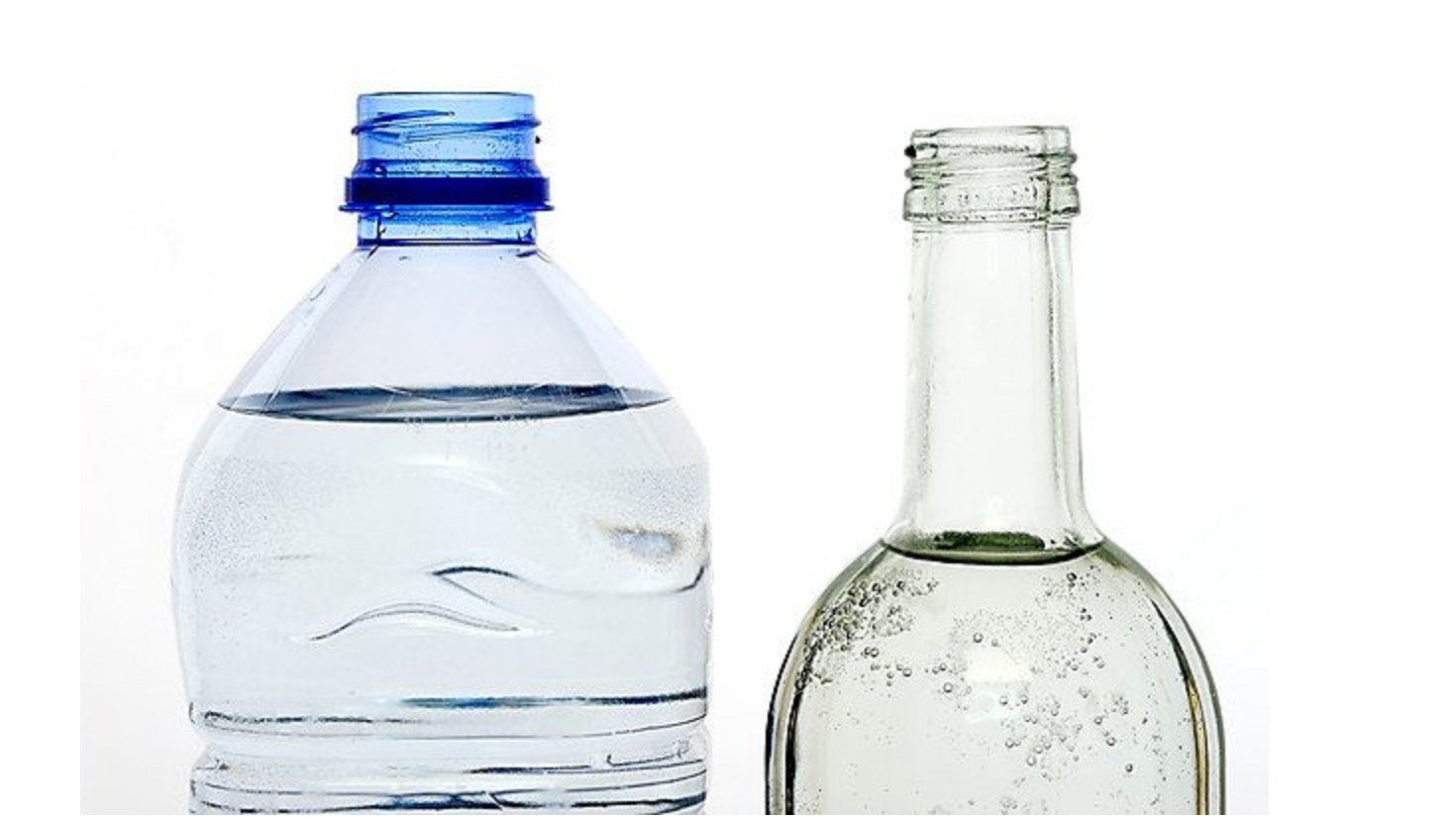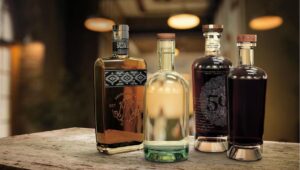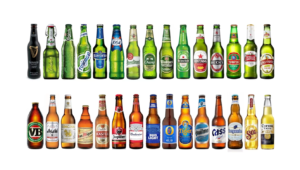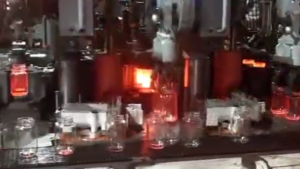Nowadays, we have various options of food packaging, plastic, glass, canning, papper, etc. They all place important roles in our daily life. But today we will focus on glass and plastic packaging. We would be remiss to not acknowledge that both substances have awesome uses crossing many fields from the everyday to the medical. We must also note that we have abused and overused both. But, here we can’t help but cheer for glass in the battle of the containers. While it will never be so easy as to say, “glass, good” and “plastic, evil,” we do have a few good reasons why glass is better than plastic packaging.
Before we compare glass and plastic packaging step by step, let us firstly study the basic knowledge about glass and plastic—what and how is glass & plastic made?
What is Glass
- The raw materials for making modern glass are silica sand and soda ash, limestone (added to lower the temperature at which the mix melts), and frequently magnesium oxide and aluminium oxide (to provide for better chemical durability).
- Another basic and highly-essential ingredient is cullet. Cullet is recycled glass that helps reduce the amount of raw materials and energy needed to make new glass. A glass batch may consist of 25 to 60 percent cullet by volume. Cullet is crushed glass, generally of the same composition as the mineral mixture, and comes from regrind from previous production runs and recycling sources. It is included because its characteristic of melting in the furnace before the other minerals helps accelerate the batch’s reaction into molten glass. It is an important energy-savings ingredient that both lowers the amount of energy needed for the melting process and in turn helps reduce greenhouse gas emissions. The resulting glass that is produced typically contains about 70 to 74 percent silica by weight.
What is plastic
- Plastic is versatile. It comes in many varieties like polyethylene terephthalate (PET), high density polyethylene (HDPE), low density polyethylene (LDPE), polypropylene (PP) and more. Each of these materials has its own chemical compatibility properties, temperature rating, impact resistance, etc.
From the basic material of glass and plastic, we can see that glass is purer and healthier, but plastic is chemical. You put so much effort into making your brand look and taste perfect, so why would you risk that?
Advantages of glass packaging
1–Delicious Tastes Comes from Glass Bottles

Glass bottles preserve the flavor of your dairy product much longer than other types of packaging. This is because the material is less likely to allow contents to mix with air or other possible chemicals.
Moisture is also less likely to get in the container, keeping your food safe from mold or going stale faster than you’d like it to.
While plastic erodes over time, glass has to physically break to become contaminated. This protects your product and keeps your consumers coming back for more delicious taste.
80 percent of consumers in a survey said that they believe that glass containers maintain the quality of the product better than other packaging. Since consumers are aware that glass is better for taste, they’re more likely to keep buying your product in glass.
2–Glass Packaging is Healthier and Safer For Consumers and Their Families

Glass is always a safe choice to use for packaging products. Plastic can melt, and there are risks of chemicals leaking into your food. Certain plastics aren’t even safe for food production. Plastic containers are at risk for high levels of BPA, which is a compound that is used to make certain types of plastic. BPA can seep in through the food containers and contaminate the product within that container.
BPA has serious health consequences when ingested, especially for children and babies. It can affect hormone levels, brain function, and prostate function.
With glass, you don’t have to stress about chemicals and contaminants. Glass is made from natural materials including sand, limestone, and soda ash. It’s actually the only packaging material that has been designated as fully safe by the FDA.
Glass is chemically inert because of its natural composition, which means it isn’t made up of reactive chemicals. There is a high barrier between different chemicals and substances.
This high barrier means that your product is less likely to become contaminated, and it will stay fresh for longer.
The world is full of health scares and terrifying food contamination stories. Don’t let your brand become another news story. Keep your customers safe and healthy so they’ll keep coming back for years to come.
3–Surface Value: Beautiful, Attractive Dairy Products in Glass Containers

One of the most obvious benefits that comes from putting your dairy products in glass containers is the visual appeal. It’s much more sophisticated than plastic or paperboard and can really make a shelf look great.
Glass bottles are attractive to customers because they have a classic look. They never get old or boring. They stay simple and never go out of style.
Many people also choose to keep and repurpose their glass containers once they’re done using the product. There’s a reason they don’t do this with plastic jugs- they don’t look very nice.
You have the opportunity to create a beautiful, colorful label while keeping the bottle simple and traditional. It’s not confusing and your customers will know exactly what they’re getting.
Simplicity is key when people are buying food products because they want to be able to find what they’re looking for on the package. The majority of today’s consumers read the label of a product, and if they don’t find what they’re looking for they won’t buy it.
4–Easier Consumer Experience With Glass

When a plastic product is used over time, the plastic becomes distorted. It gets bent inward on certain sides, or shifts its shape to an inconvenient form.
This can cause issues when your customers are trying to get the last little bit out, or trying to scoop the product out.
Glass always stays the same. It’s solid and will not lose its shape regardless of how much you try to bend it or twist it. When it’s time to get down to the last little bit, it’s easy to get around because the container won’t move.
5–Environmental Benefits From Glass Dairy Packaging

Let’s not forget how beneficial glass packaging is for the environment. In today’s world, environmental consciousness is a huge deal and a big selling factor for many consumers.
Glass is completely recyclable, and it can be used over and over again as many times as necessary. It is the only packaging product on the market that has an endless recycling life.
It also has one of the fastest turnover times when it’s recycled. A glass bottle can go from the recycling bin, through the recycling process, and be made into a new bottle ready for use within 30 days.
Many companies will also collect those containers when you’re done with the product and take them back to reuse again. For example, with home milk delivery in glass bottles, the delivery company will take back the empty bottles and replace them with new, full ones.
Consumers can also reuse the glass bottles or containers as many times as they wish. There are many crafts and decorations that people can do using glass bottles
Conclusion
When you need high quality glass bottles, contact the experienced professional glass bottle manufacturer in China. We can assist you in finding the best value in glass bottles with the highest level of quality. The right glass bottle can protect your product and provide an appealing presentation to your customers.




